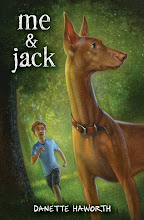Using Artifacts in a Scene: 3:10 to Yuma as an Example
I recently saw 3:10 to Yuma, the new western starring Russell Crowe and Christian Bale. Excellent film. Without going on about the good-looking leads, I'll get right to the literary point. (Spoiler alert.)
Conversation drives a scene. But it's really the foreground of a picture. To make the picture full, we must sketch in the white space. An easy way to do this is to describe facial expressions and character movement, but a subtle way of doing it is to use the artifacts in the scene in a meaningful way.
I'm using a movie to demonstrate this point, but the same technique can be used in writing. Russell Crowe's character, Ben Wade, sketches all the time (one of those character devices used to flesh out the villain). Dan Evans (Christian Bale) is a rancher whose last chance at saving his land is by delivering Wade alive to the 3:10 prison train to Yuma and collecting the reward. Dan Evans is established early on as passive. His barn is burned and he doesn't retaliate, even though he saw the men who burned it. His son is full of disrespect for the father he sees as spineless.
There is a point in the movie in which Wade and Evans sit alone in a hotel room, waiting for the train. The other bounty hunters have dropped out or been killed. Wade offers Evans $1000 to let him escape; given what we've seen Wade do to the other bounty hunters, this is a generous offer.
Time creeps toward the crisis: Will Evans take the easy way out? After all, the money is actually all he needs. And we've seen him take the easy way out before. Or will Evans strike a new path for himself? We've seen glimpses of the man he could be.
As they sit in tense silence, Wade sketches. Revealed later, the sketch is of Dan Evans as he kept vigil from the hotel window. But here's the important part: Wade drew the sketch on the only paper available--a title page in the Bible. When we see the sketch, we also see the words New Testament. This is a great example of using an artifact in the scene to further character/plot development. The sketch appearing on the New Testament points to the moment when Dan Evans becomes a new man--he will not sit back, he will not remain passive, he will not take the easy way out. He leaves the old Dan behind and rises up, bold and committed. This is his new testament.
I'd like to point out that the book Wade held was far too thick to be just a New Testament, unless they produced large print Bibles back then. Using the New Testament was a deliberate choice made by the film makers.
We can make this kind of choice in our writing. Our characters are surrounded by artifacts. Use those artifacts to reflect the story--it's a deft touch and delivers great impact.



















5 comments:
This is a fantastic post.
Thank you, Courtney!
Hi Danette, I'm reading your post, and my head is digesting what you're saying (great info and all!) but my heart keeps thinking "Frickin' Yum!"
....Russell Crowe
:-)
Church Lady,
Your point is well received. :)
I just added Yuma to my Netflix ( for whenever it's released to DVD). Are Westerns coming back in style?
Duvall just won a bunch of Emmys for a Cowboy TV movie he did.
Thanks for your interesting post. Makes me want to write fiction.
Post a Comment